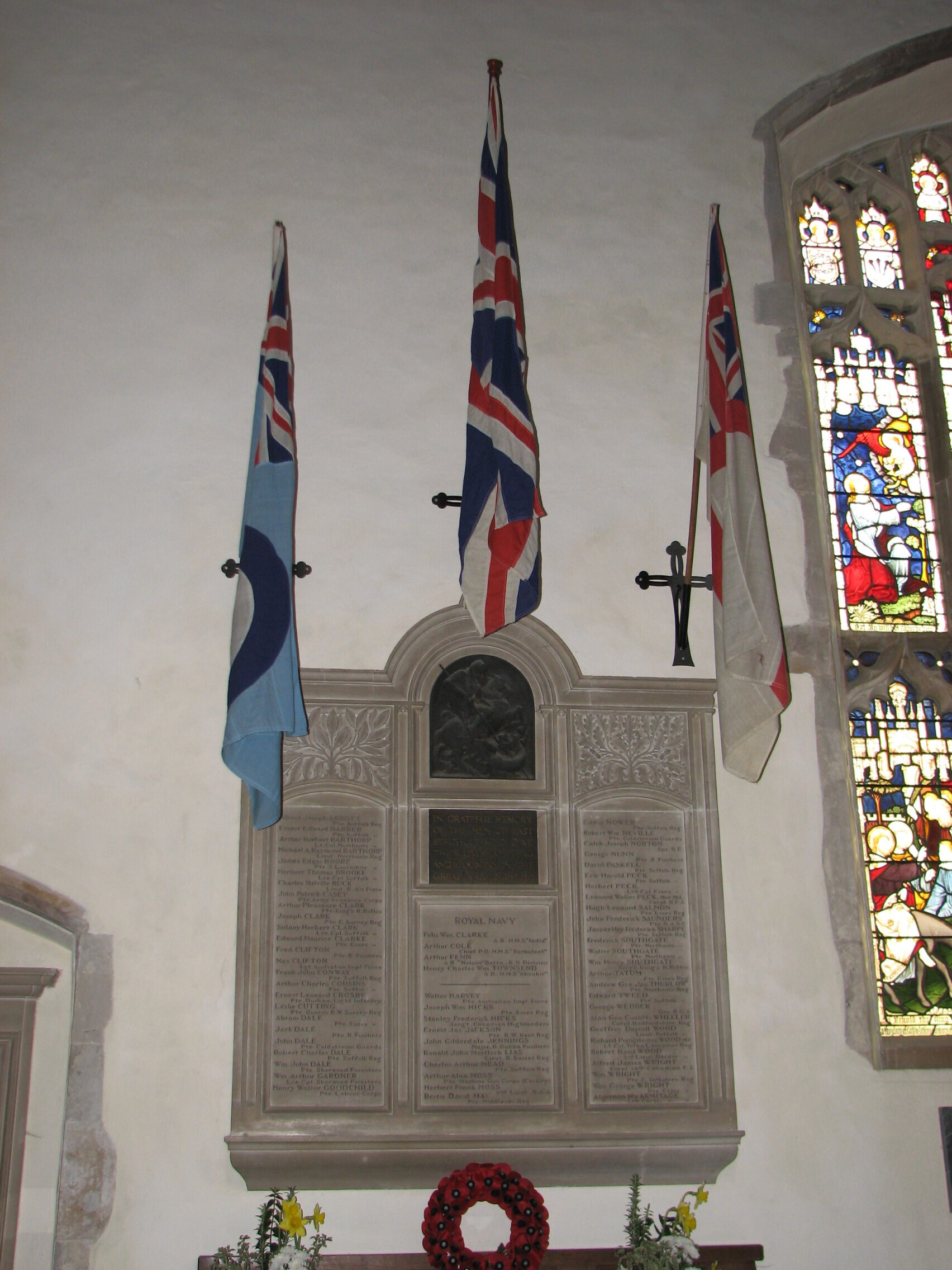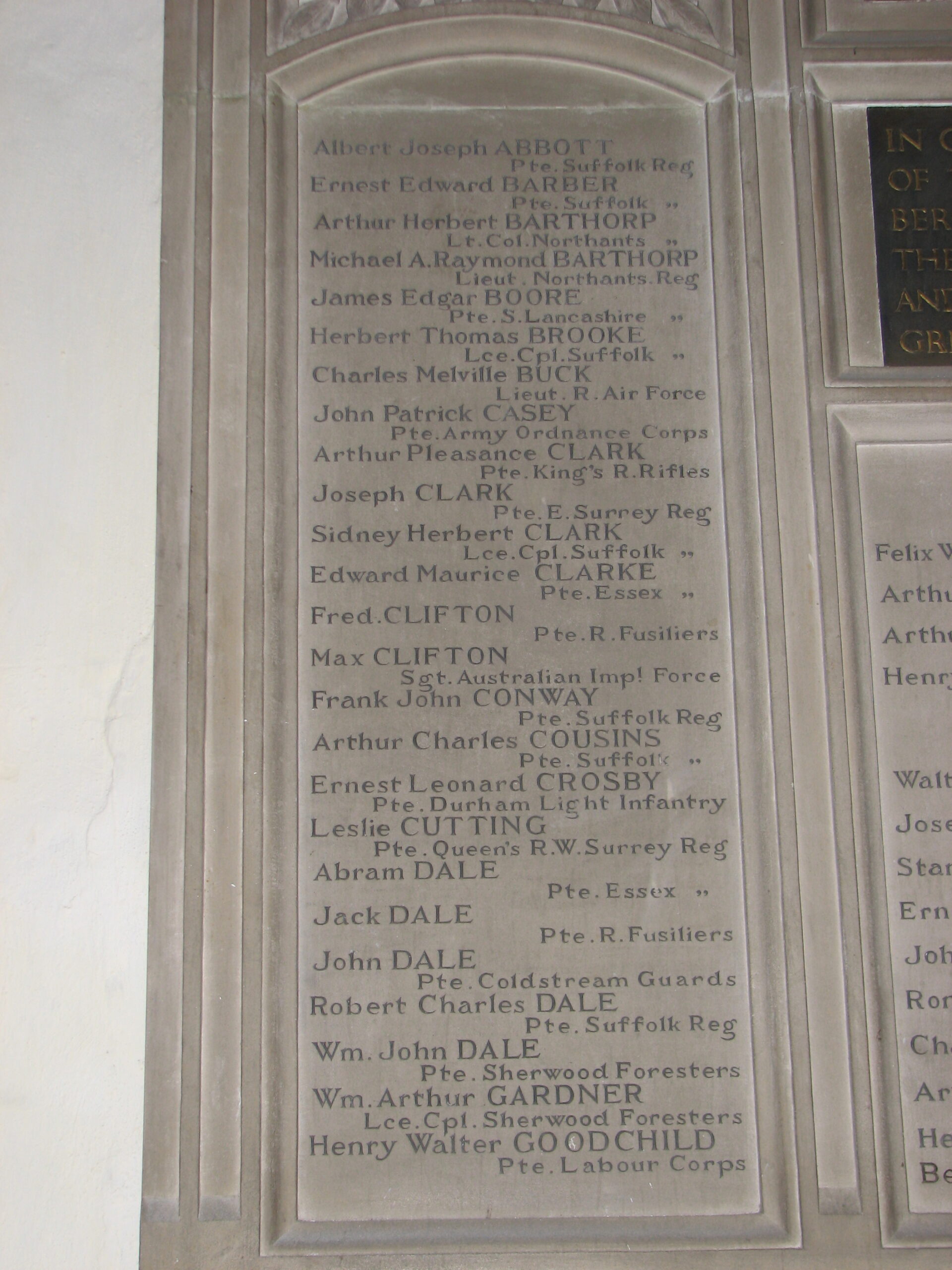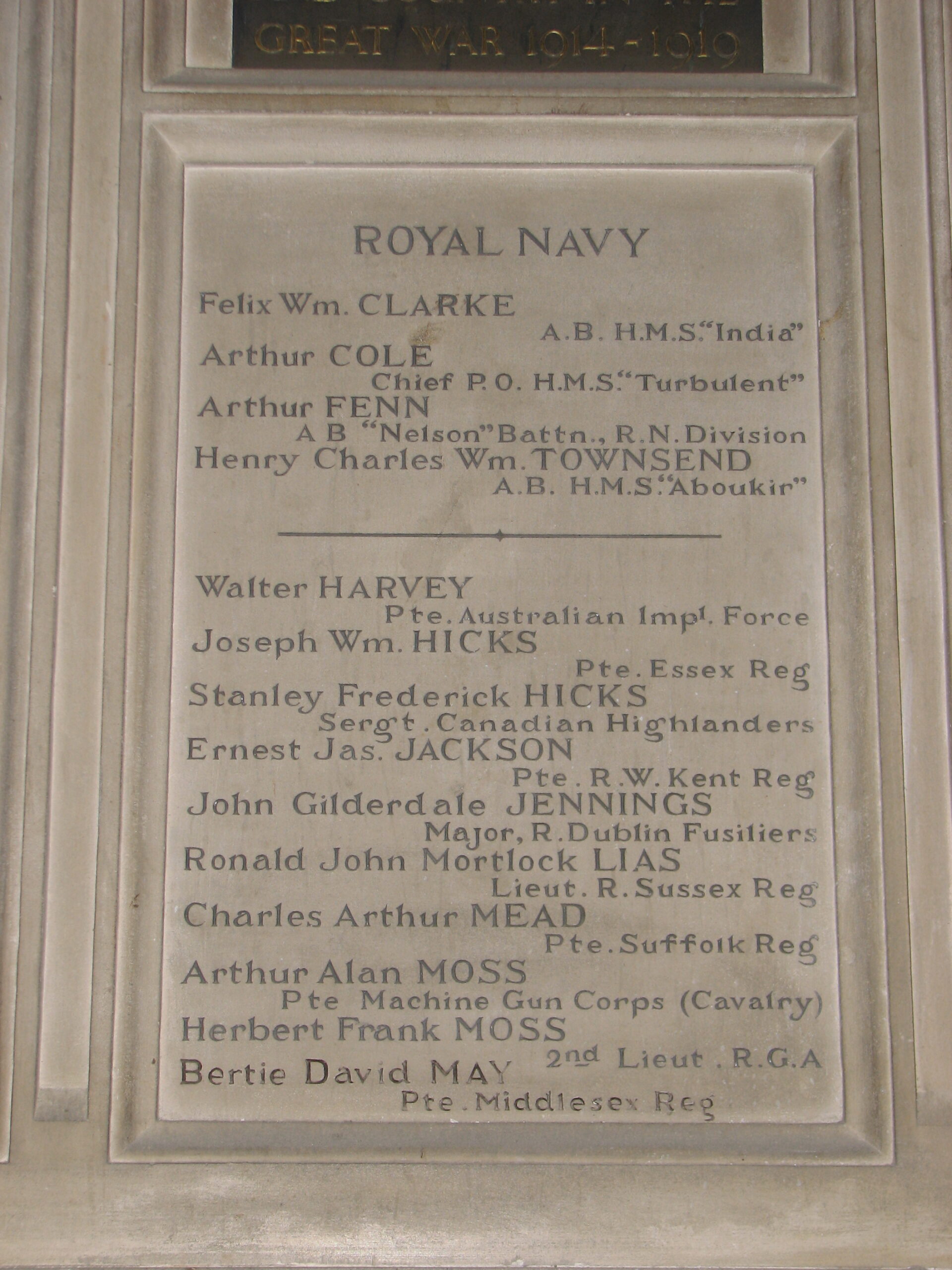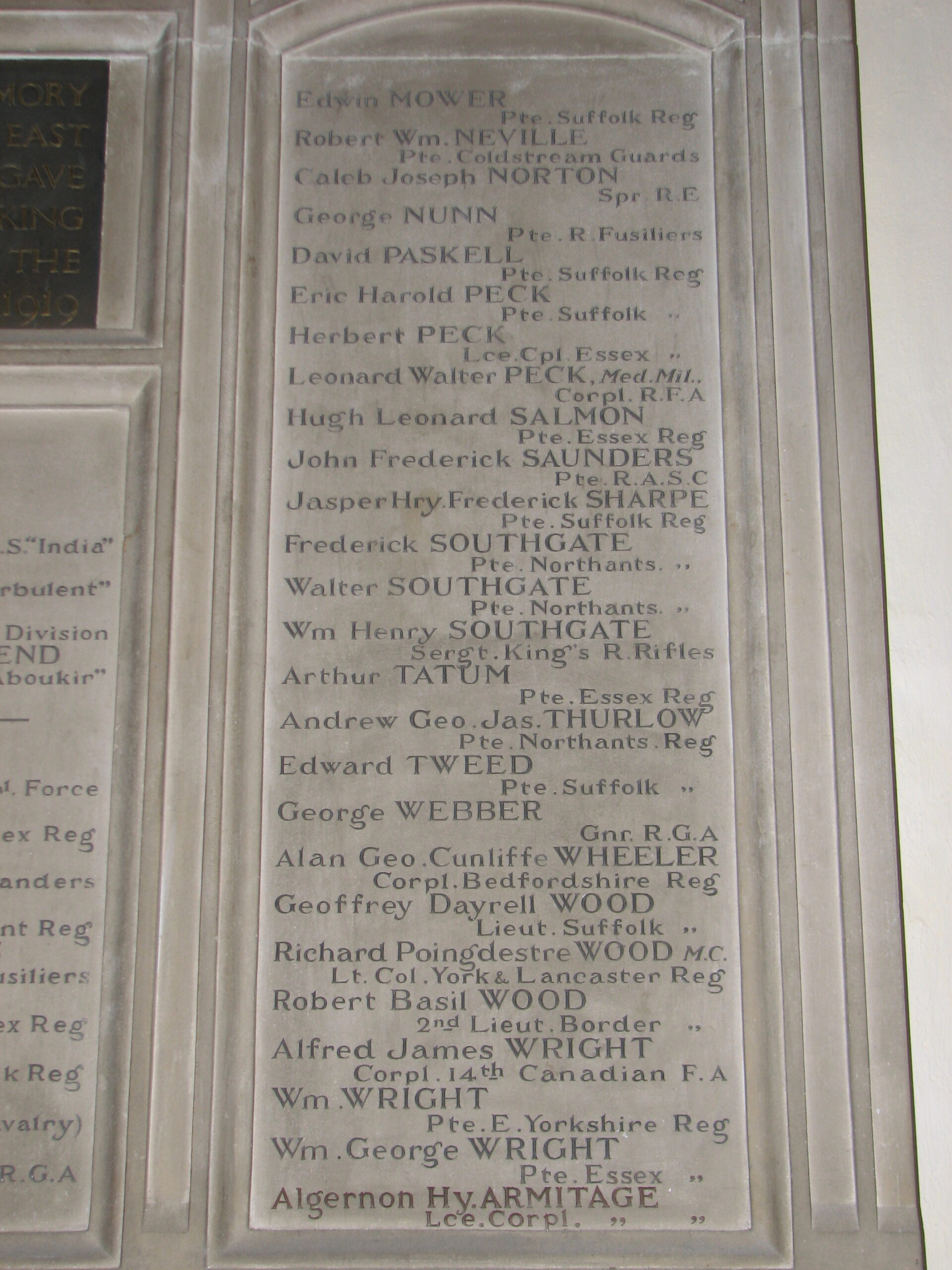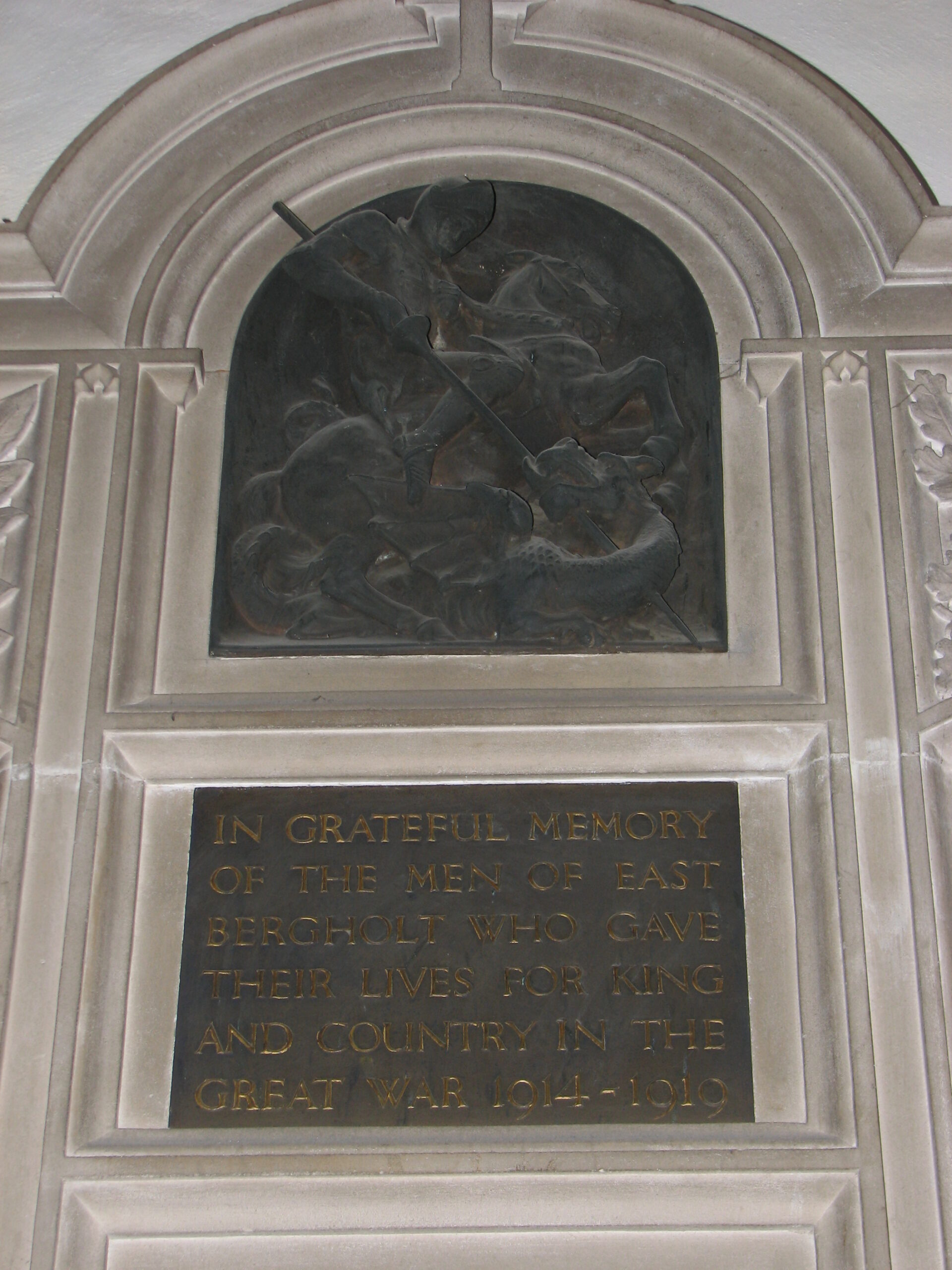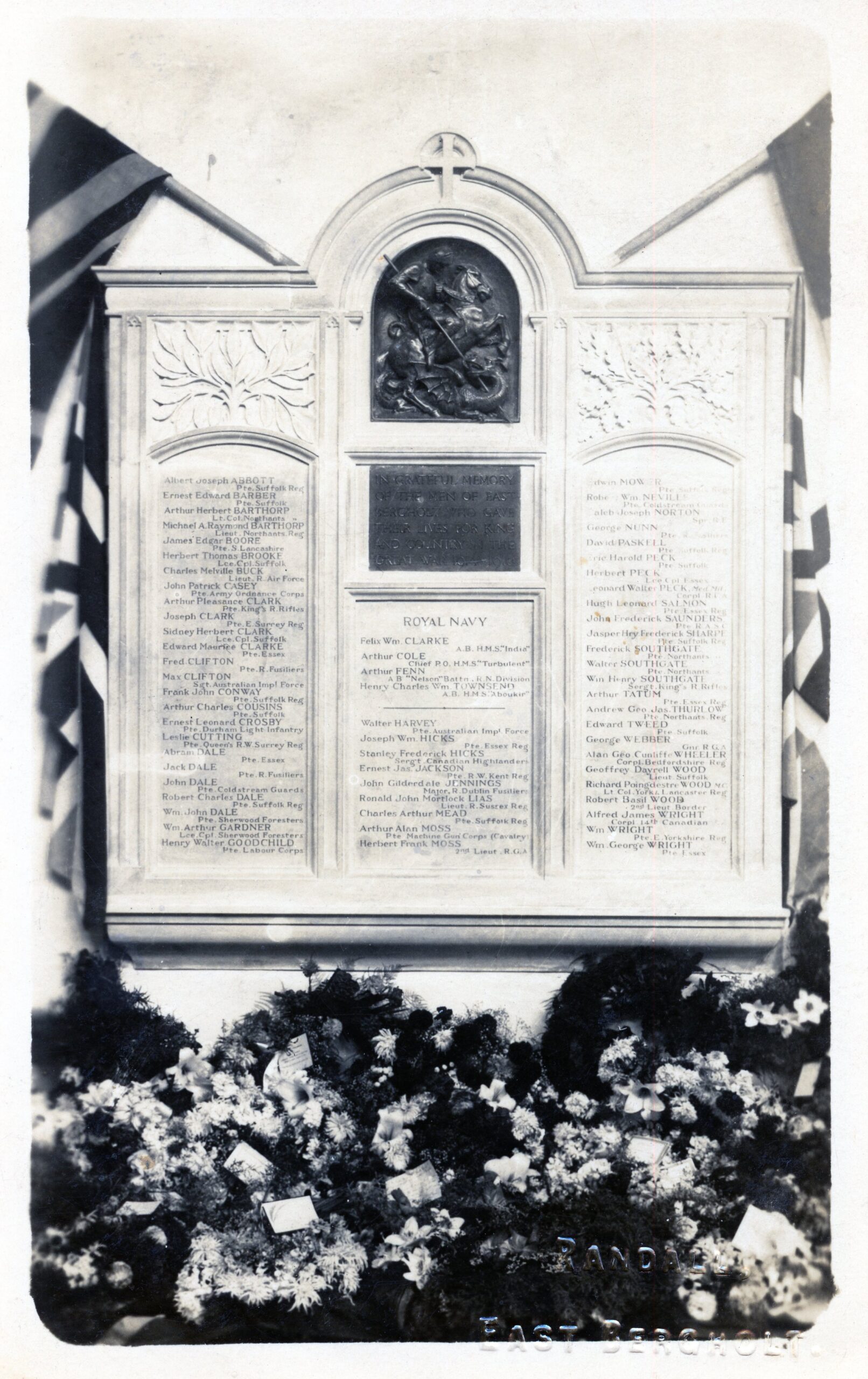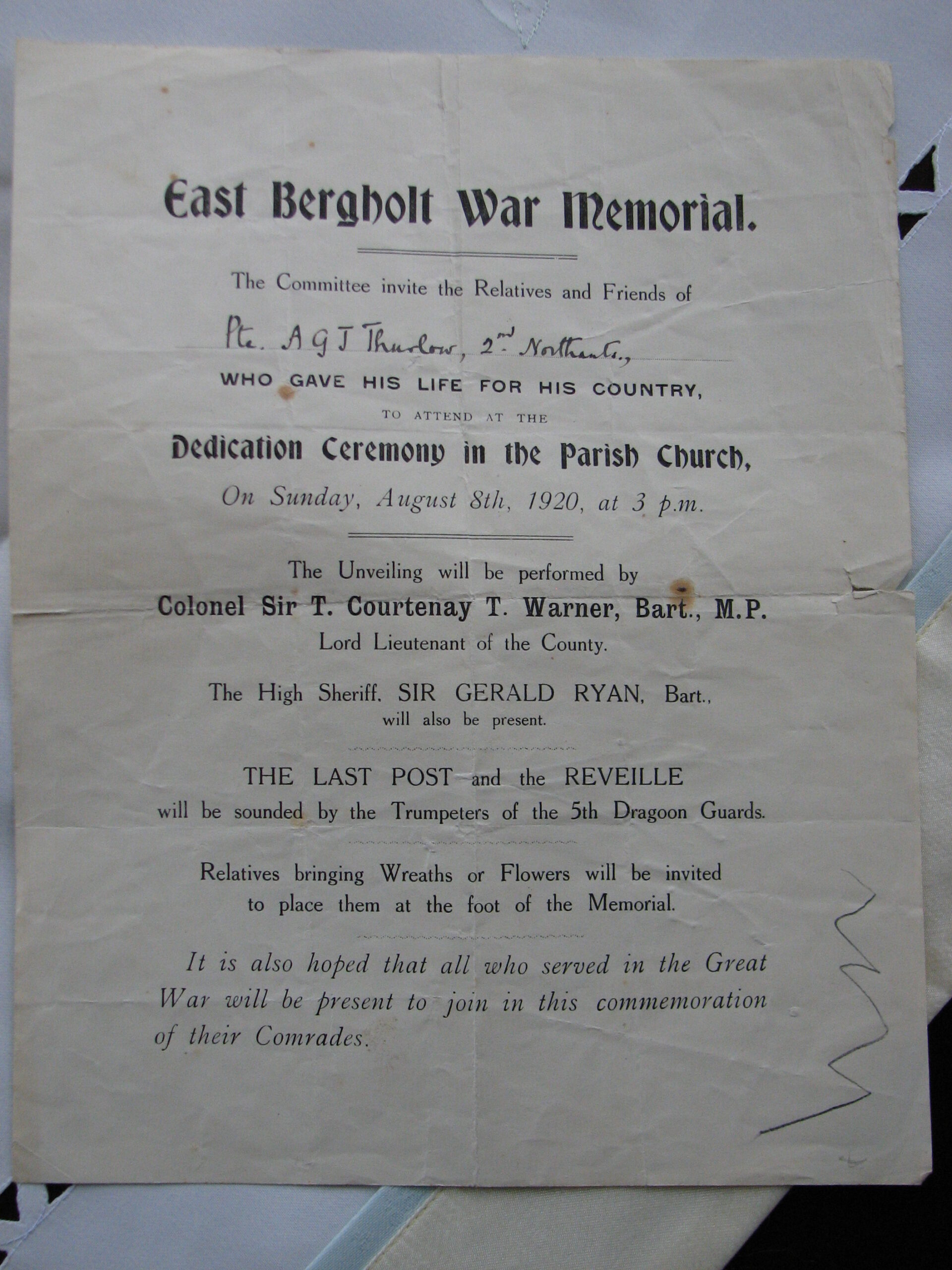The Great War Memorial
Unveiled on 8 August 1920, the Village Memorial to those who Gave Their Lives in The Great War can be found in the South Aisle of St. Mary’s Church. It contains the names of 65 men from the village (or whose close family lived in the village) who lost their lives in the Great War, or shortly afterwards as a result of their wartime service.
- 4
- The Village Memorial to those who died in the Great War
- 51.970004, 1.012765
Details
The Village’s Memorial to those who Died in the Great War, stands in the South Aisle of St. Mary’s Church
In 1923, the Rector – the Rev. T.F. Paterson, M.A. – wrote that on this Memorial “are the names of sixty-five men connected with East Bergholt who died in the service of their country”. When the Memorial was unveiled it only contained the names of 63 men: The names of Bertie May and Algernon Armitage were added very shortly afterwards.
Unfortunately, no complete record seems to exist of exactly who was involved in determining which men were to be commemorated on the Memorial, nor (except for one man) the criteria they used. 1 In his book “East Bergholt in Suffolk” by T.F. Paterson, M.A., Rector (Printed for Private Circulation, 1923), the author states that “On [the Memorial] appears the name of Ronald Lias. Though he did not join the Army from here, yet we felt it proper to include him as one of those honoured in the parish where his father had been rector, and he himself had lived when a boy.” However, we do know that the Rector was part of the group and given that this was a cross-denominational memorial for the whole village, it would be reasonable to assume that representatives of the other churches were also involved, along with prominent members of the community.
Like many of the community war memorials around the country, this Memorial commemorates those who died whilst serving in the Armed Forces and also those who died as a result of their Service, shortly after the leaving Armed Forces.
Statistics and “Cold” Facts
An analysis of the men commemorated on the Memorial reveals that:
- Not all of the men were still living in the village at the time that they joined the Armed Forces.
- Up to 4 of the men may well not have actually lived in the village at all – however, their close family (e.g. parents or grandparents) did live in the village during the War.
- 33 of the men were born in East Bergholt.
- 64 of the men are also commemorated on the “Roll of Honour” which contains the names of those “East Bergholt Men Who Served in the War of 1914 to 1919”.
- 4 of the men did not serve in the British Armed Forces : They had previously emigrated to the Dominions and subsequently died serving with their respective Armed Forces.
- 1 of the men was not actually a member of the Armed Forces at all. He was a member of the Volunteer Training Corps – the Great War precursor of the Second World War “Home Guard” (or “Dad’s Army” as it is popularly known). 2 Edward Tweed is also the only man commemorated on the Memorial to the Fallen, who is not commemorated on the Roll of Honour. It is interesting to note that whilst the Commonwealth War Graves Commission (previously the Imperial War Graves Commission) commemorates members of the Second World War Home Guard (in certain circumstances), they do not commemorate members of the Great War Volunteer Training Corps.
- 1 family – the Barthorps – lost a father and a son.
- 3 families each lost 3 brothers (the Dale, Southgate and Wood families).
- 4 families each lost 2 brothers (the Clarke, Clifton, Moss and Peck families).
- 1 family – the Jennings – lost an uncle and a nephew.
- 45 of the men died in France or Flanders (the “Western Front”).
- 11 of the men died in England.
- 4 of the men died at Sea.
- 2 of the men died at Gallipoli.
- 1 man died in Mesopotamia.
- 1 man died in Palestine.
- 1 man died in Russia.
- 13 of the men were aged 20 or less, when they died.
- 22 of the men were aged 21 to 25, when they died.
- 15 of the men were aged 26 to 30, when they died.
- 12 of the men were aged 31 to 40, when they died.
- 3 of the men were aged 41 or over, when they died.
- The oldest of the men was 57 at the time of his death, the youngest was just 18.
- 22 of the men have “no known grave” and are officially commemorated on Commonwealth War Graves Commission Memorials to the Missing.
- Some of the men are also commemorated on the War Memorials erected by other communities, elsewhere in the country.
- Only 1 of the men is also commemorated on the Brantham War Memorial, despite that fact that others who are remembered on the Bergholt memorial also lived in both parishes at various times during their lives.
- The first of the men to die, was killed in September 1914; the last, died in May 1920.
- The Village’s greatest single loss on one day, occurred on 9th May 1915, during the Battle of Aubers Ridge. 3 men (including 2 brothers), who had all “joined up” together, were killed on that day, whilst another Bergholt man, was seriously wounded.
- 2 servicemen who died during the War and who are buried in East Bergholt Cemetery, are not commemorated on the Memorial.
- To date at least 11 other men have been identified who died in the Great War and who could be considered to have close connections to the village, but who are not commemorated on the Memorial.
The Unveiling
The Memorial was dedicated on the afternoon of Sunday, 8 August 1920. Relatives and Friends of many of those commemorated on the Memorial were invited.
The Unveiling was reported in The Suffolk Chronicle and Mercury of Friday, 13 August 1920:
“The unveiling and dedication ceremony of the war memorial erected in East Bergholt Church took place on Sunday afternoon, when the ancient spacious edifice was filled to its fullest capacity by the relatives and friends of those who gave their lives for their country. The congregation included a number of servicemen, who were present to join in the commemoration of their comrades.
The service was conducted by the Rector, the Rev. T.F. Paterson, Rural Dean, who was supported by the Rev. Charles Stanley (Nonconformist), who read the lesson, the Rev. D. Collyer, the Rev. J. Calvert, and the surplice choir.
The seating of the congregation was under the direction of Sir Collingwood Hughes, Bart., Mr. E.R. Wood (churchwardens), Mr. H. Juby, Mr. R. Smart, Mr. A. Scarfe, and Mr. H.A. Randall (sidesmen).
After the singing of the hymn, “For all the Saints,” and the reading of a special lesson, the Lord-Lieutenant of the County, Colonel Sir Courtenay Warner, Bart., M.P., accompanied by the High Sheriff, Sir Gerald Ryan, Bart., proceeded to the south aisle, where, on the wall adjoining the south chapel, a handsome monument had been fixed, bearing the names of 62 [sic] of those inhabitants of the village who had fallen in the war.
The monument is in the form of a large and handsome tablet of Portland stone, surmounted by bronze figures of St. George and the Dragon, and inset is brass plate bearing the inscription – “In grateful memory of the men of East Bergholt who gave their lives for King and country in the Great War, 1914-1919.” Designed by Sir Thomas Jackson, the memorial was erected by Messrs. Farmer and Brindley, of Westminster Bridge Road, and will be permanently mounted by flags.”
Copyright © Mark Ashmore, 2024
- 4
- The Village Memorial to those who died in the Great War
- 51.970004, 1.012765

